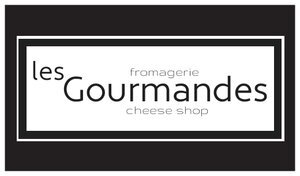Let us help you become a connoisseur of cheese!
Cheese families
There are several varieties of cheeses the we classify according to the “Seven Cheese families”. Usually divided according to the type of rind, the texture and the flavor, all families can be made from different types of milk; cow, goat, sheep, and buffalo. The different types of milk allow for a wide range of textures and aromas.
1- Fresh
( no rind)
With no rind these cheeses look the same from the inside out! Typically only a few days old, these cheeses are too young to form a rind and have a texture that is moist to the surface. They are bright white, mild, lemony or lactic with a hint of milk flavor. Some examples include authentic mozzarella that is stringy, but if pickled like Feta becomes crumbly. The daily fresh cheese curd is another great example.
2- Aged fresh
(wrinkled rind- white, grey or blue)
These mostly consist of goat cheeses. The fresh cheese is allowed the growth of a thin transparent rind which appears and wrinkles as the cheese shrinks, and turns blue as the mold develops. If this cheese is aged, it becomes more dry, the rind becomes dark and brittle, and the flavor becomes very intense and goaty. Some examples include Ste-Maure and Triangle Cendre.
3- Soft
(white rind- fuzzy or crusty)
These cheeses grow a fine, white, fluffy to crusty rind of penicillin cndidum mold, which prevents the interior from drying out as these cheeses age. Some are made by adding cream, to produce a creamy double or triple cream cheese. while young, these cheeses are mild, sweet and buttery, but as they age can develop a robust savory aroma. Some examples include Camembert, Brie de Meaux, Buche de Chevre, and Chateau de Bourgogne.
4- Semi-soft
(washed rind- sticky, brown, orange)
These can range from having a thin to thicker rind. To keep their elastic, rubbery texture, they are lightly pressed to remove whey. They attract a variety of molds which are regularly washed off creating a leathery rind. Some are repeatedly washed in brine to create an orange finish with a pungent aroma and flavor. Classic examples include Munster, Taleggio, Epoise, St Nectaire, and Raclette.
.
5- Hard
(crusty rind- often polished, waxed, or oiled)
These cheeses can be pressed for weeks to remove the whey. They have a low moisture content and typically are more complex and stronger in flavor. They attract a variety of molds but most are brushed off during the aging which can result in a thick, smooth, polished rind like Parmesan, or a barely formed rind like cheddar. Other examples include Pecorino, Beaufort, Gruyere, and Manchego.
6- Blue
(rough rind- gritty, sometimes sticky)
Blue penicillium mold is added to the milk before it has curdled. The cheese is then pressed and pierced to allow air to penetrate as it ages. The spicy taste comes from the blue mold reacting with the curd. Some examples include Stilton, Gorgonzola, Roquefort, Shropshire, Geai Bleu.
7- Flavor added
(various)
These cheeses are made with ingredients added to them which can vary from nuts, fruits and herbs. They can range from hard cheeses such as Sartori cheese with flavors of Espresso, Merlot, Raspberry, Guinness Cheddar, and Rosemary Goat Cheese. Softer cheeses include Brie aux Truffles and Saint-Julien.








